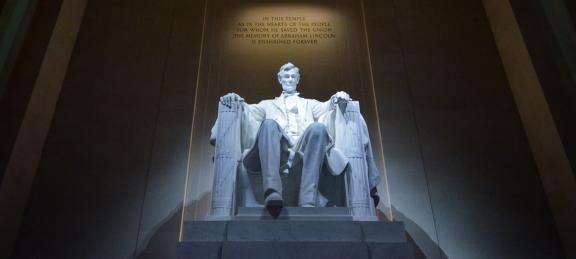Jam v. IFC - What does it mean for accountability?
To sue, or not to sue, that is not the question
If you suffered harm from a project funded by an international financial institution what would you do to obtain redress? You have two options. You can look for expensive lawyers in a country 6000 miles away to litigate for compensation or you can write a letter to the financial institution’s accountability mechanism at little cost in the hope of receiving redress. Which would you choose?
In 2007, the International Finance Corporation (IFC) invested 450 million dollars in a coal-fired Tata Mundra Plant in Gujarat, India. Despite studies showing significant social and environmental impacts, the IFC continued to provide financial support to the project.
The affected individuals filed a complaint in 2011 with the Compliance Advisor Ombudsman (CAO) – the IFC’s accountability mechanism. A year later, the CAO concluded that the IFC had failed in its obligation to ensure that its project met some of the necessary environmental and social safeguard requirements. In a comprehensive report, the CAO concluded that the IFC, “did not meet the due diligence requirements set out in the Sustainability Policy.”
In response, the IFC contested the majority of the CAO’s findings. It subsequently came up with a remedial action plan that the complainants felt did not adequately address their grievances. In January 2015, the CAO released a monitoring report confirming that the IFC had still not taken meaningful steps to remedy the harm caused by the Plant. Until then it was thought that the IFC enjoyed absolute immunity from being sued in court.
The complainants from the Tata Mundra Project then turned to the U.S. courts for help and filed a suit in the District Court in 2016. The District Court dismissed the suit ruling that the IFC had absolute immunity in the US courts. In June 2017, the D.C. Circuit Court of Appeals affirmed the District Court decision. Both decisions rested on the interpretation of the International Organizations Immunities Act (IOIA). This legislation from 1945 states that, the IFC enjoys the, “same immunity from suit…as is enjoyed by foreign governments.” In 1976, the U.S. Congress subsequently codified the law regarding immunity enjoyed by foreign governments in the Foreign Sovereign Immunities Act (FSIA). FSIA provides exceptions to foreign sovereign immunity. This includes an exception for, “actions based on commercial activity with a sufficient nexus with the United States.”
The IFC argued that it was immune from suit because it enjoyed the same absolute immunity that sovereign governments enjoyed in 1945 when the IOIA was enacted. The complainants on the other hand argued that the “same as” wording of the IOIA provision meant that immunity would be “continuously equivalent” and would change depending on how the meaning of sovereign immunity changed over time. Since sovereign governments no longer enjoy absolute immunity, it was argued that international organizations shouldn’t be able to either. The Supreme Court of the United States (SCOTUS) agreed with this formulation. It reversed the Circuit Court’s decision and the case has been sent back to the District Court for further proceedings.

While the SCOTUS decision is undeniably a win for human rights and environmental activists, it is important to consider whether recourse to U.S. courts is the most effective remedy for IFC's project affected people. Some have suggested that if the IFC can be sued, then there is no longer a need for an accountability mechanism such as the CAO. Instead, they argue, that disputes arising from harm caused by projects funded by the IFC can be dealt within the judicial system. This logic is dangerous and flawed for many reasons.
Firstly, the immunity exception established by the FSIA is very narrow. Suits must be based on action of a commercial nature with a nexus to the United States. Outside of this very specific exception, actions by the IFC are immune from suit and complainants are left without a remedy. This may well include harm caused by negligence, as this is not typically treated by courts as a “commercial activity” but rather as a tort (civil wrong). Additionally, there are many objections the District Court has yet to address. For example, does harm done to Indian citizens by a project located in India have enough of a “nexus” with the U.S. to justify raising the veil of immunity? The Court has also yet to decide whether the U.S. judiciary is the most appropriate place to adjudicate disputes from India.
Secondly, recourse through the courts, whether in the U.S. or India, places a heavy resource and procedural burden on complainants. Court proceedings are also notoriously given to long delays. In the CAO system, individual complainants face minimal procedural and financial burdens. In addition to this, the complainant has direct access to the accountability mechanism. An affected individual need only to write a letter or email to the Office of the CAO to trigger the grievance mechanism procedure. Complainants are not even required to submit supporting materials with their complaint. If the CAO accepts the complaint, there is little to no financial burden on the complainants from the CAO’s proceedings. In a well-functioning system, the CAO, together with a responsive IFC management, ought to be able to deliver adequate redress to project affected persons far more efficiently and effectively than any court can.
Alternatively, in order to sue the IFC in U.S. courts, complainants would need to hire a lawyer who could navigate the U.S. legal system for them. Unlike the CAO, U.S. lawyers often charge exorbitant fees, which many affected individuals in developing countries would be unable to afford. Forcing citizens of developing countries to rely on courts in the U.S. would exacerbate the stark power imbalance between the affected individual and the international financial institution concerned. This disparity may not exist to such an extent with the accountability mechanism of an international financial institution. Many of these mechanisms are geared to make access to them easy for complainants. Even with contingency fee arrangements available for hiring lawyers in the U.S. legal system, there are many legal obstacles faced by project affected persons seeking justice in U.S. courts which would discourage any growth of such litigation.
While the SCOTUS decision is important and should be seen as a complementary system of redress alongside accountability mechanisms such as the CAO, it is important to emphasize that this decision should not be read as a precursor to making accountability and grievance redress mechanisms of international financial institutions obsolete. On the contrary, the need for a strong and responsive accountability and redress mechanism is even more important now than it was before. The strengthening of accountability and redress mechanism is not only necessary for the protection of affected individuals, but it is essential for international financial institutions to achieve their central mission to “do no harm” to people and the environment. Finally, if international financial institutions want to avoid the exposure and adverse publicity that comes with actions brought before U.S. courts, they must strengthen their own compliance mechanisms and be responsive to recommendations for redress proposed by them.

A Crossroads for Accountability?
Simply put, the fallout of the IFC court case decided recently by the Supreme Court of the United States (SCOTUS) can go one of two ways. Best case scenario; Multilateral Development Banks (MDBs) recognize the precedent set by the SCOTUS ruling and, fearing a flood of lawsuits, strengthen their accountability mechanisms to deter complainants from seeking compensation and remedy through the courts. Worst case scenario; MDBs justify dissolving their grievance redress units and doing away with accountability mechanisms entirely.
How would they go about rationalizing the second scenario? MDBs could argue that complainants should seek compensation and remedy through the courts since they are no longer completely immune from suit. This approach could benefit MDBs in two ways. First, in terms of finances, MDBs will shell out less in funding for grievance redress processes, including the cost of enabling the participation of complainants and other stakeholders in their proceedings. Secondly, and this ties in with the first rationale, MDBs will face substantially fewer complaints since project affected person(s) or communities will need to navigate the treacherous and costly road of suing an MDB (a monumental undertaking which most if not all project affected persons dare not even dream of embarking upon). However, these rationales do not outweigh the severe consequences of doing away with accountability mechanisms.
From an optimistic perspective, the SCOTUS ruling could be a watershed moment for accountability at international institutions. Recall the days prior to 1993. MDBs were far removed from the individuals and communities who suffered adverse impacts from various projects in the developing world. The creation of accountability mechanisms and inspection functions sought to gently shift the balance to directly address the grievances and complaints of those impacted individual(s) and communities. Providing third parties the avenue to lodge complaints and ensure MDBs comply to their internal policies and procedural requirements was a considerable leap forward from a rights-based perspective. However, as the IFC case revealed; are MDBs responding adequately to the recommendations of their established accountability mechanisms? Certainly, there is considerable room for improvement in this regard.
The Asia Development Bank’s Suzuki and Nanwani put it well: “…banks still consider accountability mechanisms as internal governance tools for enhancing the operational effectiveness and discipline of the organization.” In other words, accountability mechanisms still lack the jurisdiction within MDBs to strongly influence institutional policies and decision-making. To be sure, mechanisms such as the CAO and the Inspection Panel have made considerable impacts on their respective governing institutions and, at times, proven to be bastions of progress and innovation. However, despite these progressions, the recent SCOTUS decision reveals a more elusive and undercutting issue. Why did the IFC negate to heed the recommendations and warnings from the CAO in the first place? It seems that up until the court decision, the IFC and other MDBs still took the recommendations of their accountability mechanisms far too lightly. Perhaps the IFC case will play a catalytic role for a “second wave” of accountability among MDBs and usher in an unprecedented consolidation of transparency at the institutional level, or perhaps not.
Co-written by Peter Boldt and Bethany Pereira